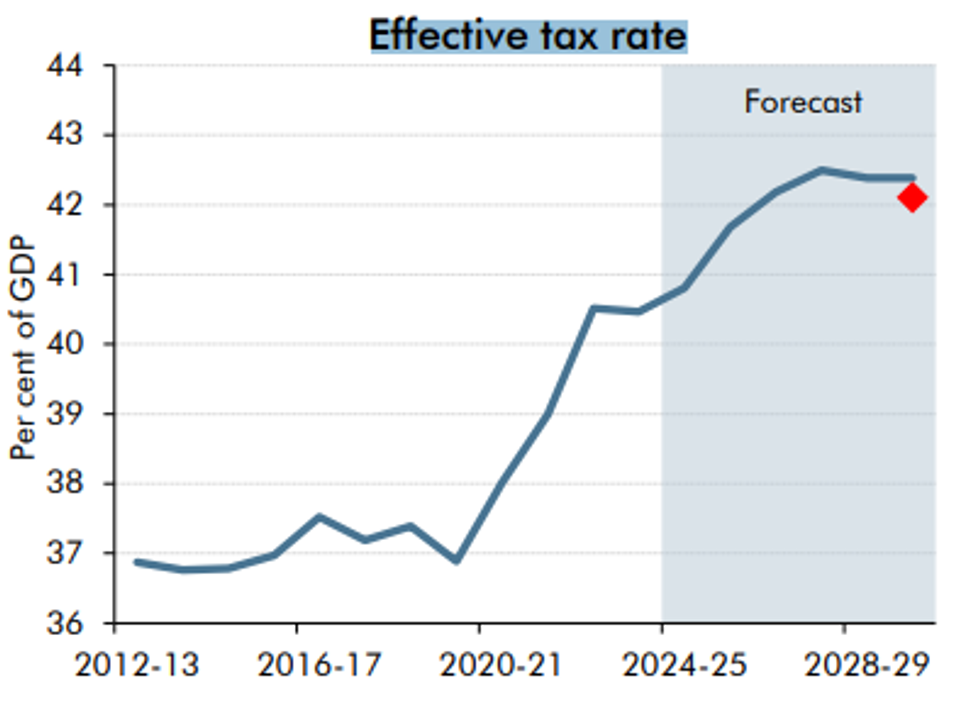Further Tax rises could hit millions
GBNEWS
The stealth tax has already pushed an extra 2.5 million pensioners into paying tax during the past 14 years
Don't Miss
Most Read
Trending on GB News
Around 249,000 retirees are currently paying over £1,000 in income tax on their state pensions, new analysis has shown.
As the state pension rises and income tax thresholds remain frozen, millions more retirees are expected to face tax bills in the next decade.
The current tax-free personal allowance remains frozen at £12,570 until at least 2027-28, while state pension payments continue to rise under the triple lock system.
Rishi Sunak, the former prime minister, referred to the issue as “Labour’s retirement tax.”
A "full" new state pension currently pays £11,502 annually, with the latest increase of 4.1 per cent set to push this to £11,973 in 2025-26.
The full new state pension is expected to exceed the personal allowance threshold within three years.
 Pensioners are worried about the future of their retirement GETTY
Pensioners are worried about the future of their retirement GETTYMore than 2.6 million people already receive state pension payments above the personal allowance limit, with many drawing additional income from private pensions.
The highest earners among retirees, with state pension payments between £43,680 and £44,200, are paying over £6,200 in income tax, while around 10,700 paying more than £2,000, analysis from The Telegraph shows.
Sir Steve Webb, a former pensions minister and now partner at LCP, said: "With tax thresholds frozen year after year alongside state pension rises totalling over 20 per cent in the last three years, a rapidly increasing number of pensioners are being dragged into the tax net.
"The proportion of pensioners dragged into the tax net has risen sharply in recent years as large cash increases in the pension have been set against a backdrop of frozen tax thresholds."
LATEST DEVELOPMENTS:
He warned that despite future pension rises likely being smaller, continued frozen thresholds would mean "more and more pensioners will end up paying tax."
The number of pensioners paying income tax is set to surge to 10 million by 2032, HMRC figures have shown.
This will represent 76 per cent of retirees being "dragged into the tax net", up 15 percentage points in a decade.
The projection, by former pensions minister Webb, takes into account the state pension age rising to 67 from 2028.
The Office for National Statistics expects the number of people over state pension age to reach 13.7 million by 2032.
The calculation assumes a minimum 2.5 per cent annual increase in state pension under the triple lock, though higher rises would push even more pensioners past the frozen tax threshold.
John O'Connell of the TaxPayers' Alliance called it a "disastrous policy" that needed to change.
The state pension system's complexity means some retirees receive significantly higher payments than others.
 Effective Tax Rate ForecastOBR
Effective Tax Rate ForecastOBRThose on the old state pension can receive additional earnings-related pension (Serps) worth up to £11,356 annually on top of their basic pension.
Pensioners who delayed starting their old state pension can receive even more, with a 10.4 per cent increase for each year deferred. By deferring for 13 years, a pensioner could potentially earn over £45,000 annually.
While the basic state pension is currently £8,798 per year - nearly £3,000 less than the new state pension - additional entitlements under the old system can make it more lucrative.
The highest state pension payments currently range between £43,680 and £44,200 annually.







